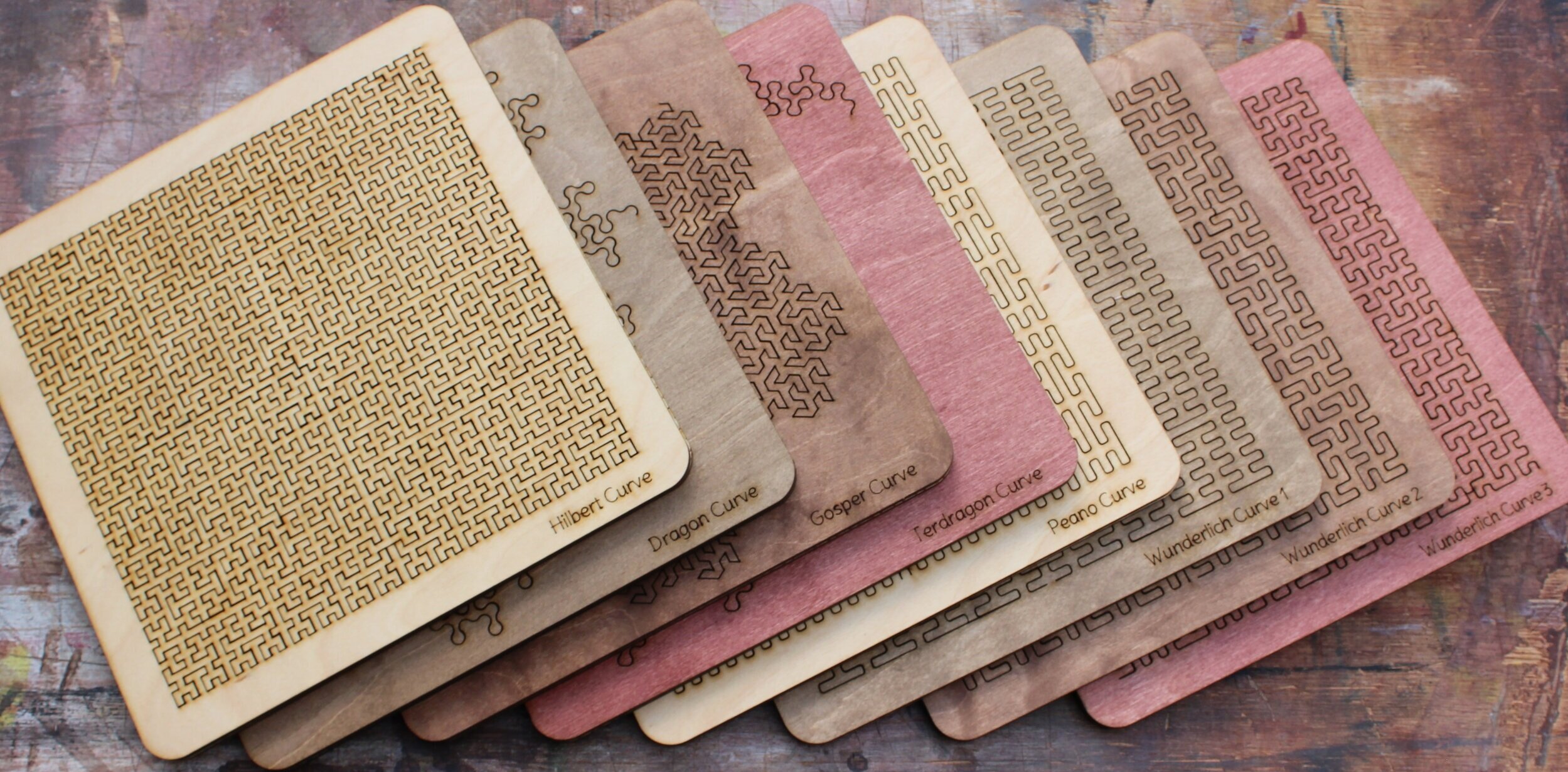
Fractal Puzzles
Eight tray puzzles based upon space filling fractal curves.
Fractal tray puzzles are high quality wooden puzzles based upon space filling fractal curves. The pattern is a single line that crosses all of the two dimensional space without ever repeating. The puzzles follow these simple rules to break the line into multiple pieces that are almost identical but are actually unique. The pieces are so similar in style that once they are placed into the puzzle it is hard to see where the pieces are. The puzzles can be tricky to solve even if you have the solution on hand.

The Hilbert Curve: first described by the German mathematician David Hilbert in 1891. A square space filling pattern drawn to it's 6th iteration. This is the easiest of the three puzzles. This puzzle has 15 unique pieces

The Gosper Curve: named after Bill Gosper and also known as the flowsnake. The triangular pattern is reminiscent of a complex snowflake. This puzzle has 14 unique pieces

The Dragon Curve: first investigated by NASA physicists John Heighway, Bruce Banks, and William Harter. It's rounded flowing pattern and nearly identical pieces make it the hardest of the three puzzles. This puzzle has 17 unique pieces

The Terdragon Curve: Computer scientist Donald Knuth is said to have first discovered the Terdragon curve. This puzzle has 16 unique pieces

The Peano Curve: The first example of a space-filling curve to be discovered, by Giuseppe Peano in 1890



The Wunderlich Curves: Three variations on the Peano curve

Puzzles are manufactured by hand in the UK,
Each puzzle is 200x200mm in size, the pieces are 3mm thick and the whole puzzle inside the tray is 6mm thick.
Orders of three puzzles are shipped via Royal mail, overnight in the UK or 7-10 working days globally.
Orders of four or more puzzles are shipped using a tracked parcel service.
